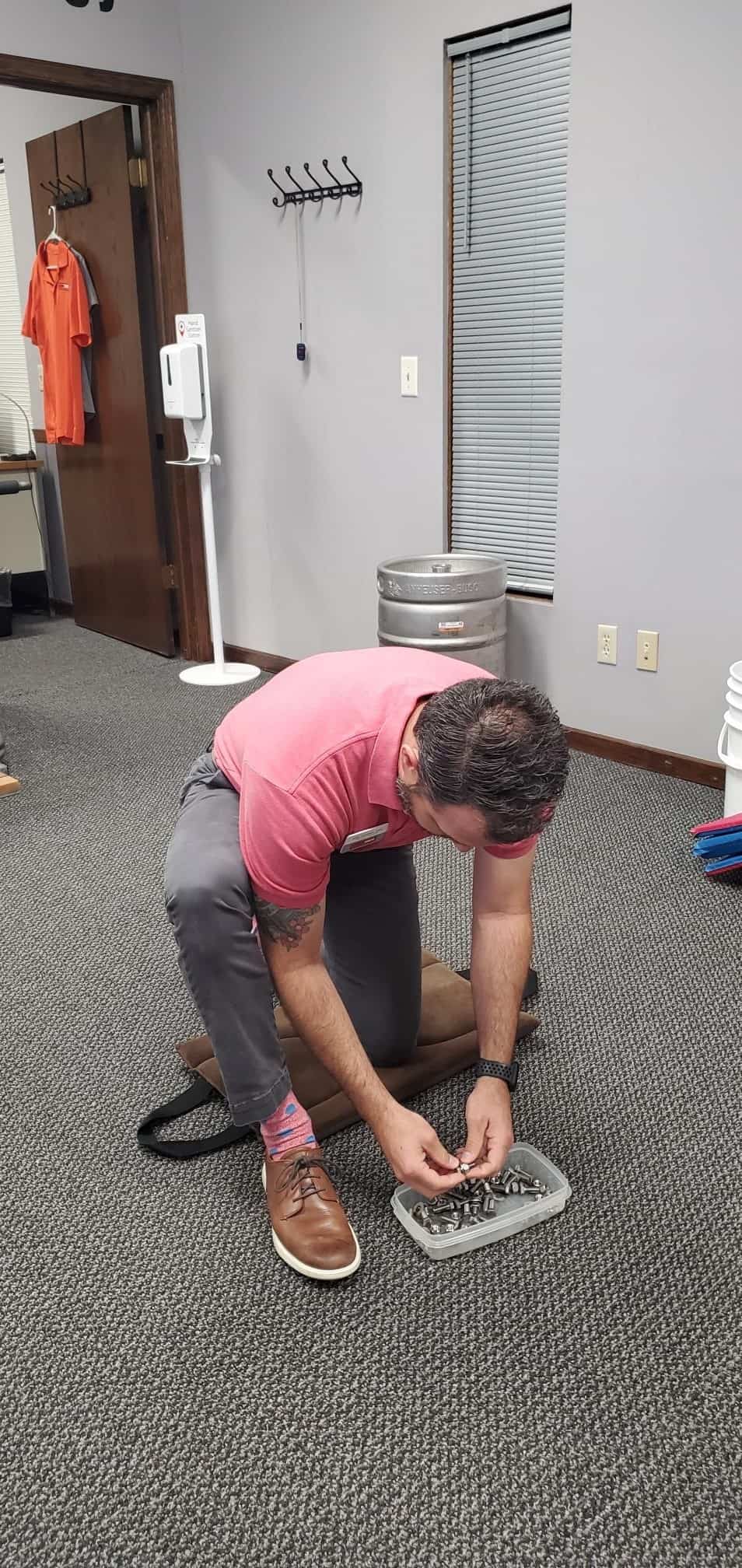Work Conditioning vs Physical Therapy
If you’ve been injured and are returning to work, you may be wondering about work conditioning programs vs. physical therapy.
What’s the difference? Which one is right for me? In this blog post, we will discuss the differences between work conditioning programs and physical therapy, as well as when each one is done in the scope of returning to work after an injury.
What is a work conditioning program?
A work conditioning program is a short-term, intensive rehabilitation program that helps injured workers regain their strength, endurance, and workplace skills prior to returning to their job. The goal of a work conditioning program is to help the injured worker safely return to their pre-injury job duties.

Work conditioning programs will last for 2 to 4 hours at a time, 5 days a week. This may last 4-6 weeks before the employee should be at a level to return to their previous job demands. They will focus not only on the injured body part but on full-body conditioning, preparing the injured worker to return to their specific job duties.
What is physical therapy?
Physical therapy is a rehabilitation process that helps patients regain movement and function after an injury. Physical therapy can help to relieve pain, improve range of motion, and prevent further disability.
Physical therapy is typically done for 30-60 minutes, two to three times a week. The frequency and duration of physical therapy will depend on the individual patient’s needs.
Physical therapy is a hands-on approach that is performed acutely (immediately) after an injury or surgery. During a typical physical therapy session, you will be in a one-on-one environment with your physical therapist.

When is each used in the scope of returning to work after an injury?
A work conditioning program is typically done after the acute phase of an injury has passed and the patient has begun to regain some strength and range of motion. Work conditioning programs are often used for patients who have had a significant amount of time off work due to their injury.
Physical therapy is often started in the early stages of rehabilitation, during the acute phase of an injury. Physical therapy can be used to help the injured worker regain strength, range of motion, and function of a specific body region that has been injured.
So, what’s the difference between Work Conditioning and Physical Therapy?
The main difference between work conditioning programs and physical therapy is the focus of each program. Work conditioning programs are focused on getting the injured worker back to their job, while physical therapy is focused on rehabilitation and healing.
A key difference between the two treatment sessions aside from the length of appointment, frequency, and duration of total treatment time is the interaction with your therapist. During physical therapy sessions you are in a one-on-one situation with your therapist at WorkSafe Physical Therapy. It is a hands-on treatment that will involve a variety of methods for treating the specific injury you are being seen for.
Work conditioning, on the other hand, requires the employee to be self-driven. Usually, after the initial visit or two where the therapist is setting up the program, the employee will then be expected to independently move throughout their program with minimal involvement from the therapist. The Physical Therapist will change and increase the program as needed to progress to the specific job demands of that employee.
During work conditioning, other forms of treatment specific to the injury will not be utilized such as manual therapy or modalities. Work conditioning is strictly an exercise-based program.
How do you know which treatment is right for you?
While work conditioning programs are focused on helping injured workers return to their pre-injury job duties, physical therapy is focused on helping patients regain movement and function after an injury.
In the overall order of events, you will have physical therapy first which is then in some cases followed by work conditioning. Not all employees that go through physical therapy will require work conditioning.
WorkSafe Physical Therapy is Your Solution to Work Conditioning
Work conditioning programs and physical therapy are both rehabilitation processes that help patients regain movement and function after an injury. Work conditioning programs are typically done after the acute phase of an injury has passed, while physical therapy is often started in the early stages of rehabilitation. The main difference between work conditioning programs and physical therapy is the focus of each program – work conditioning programs are focused on getting the injured worker back to their job, while physical therapy is focused on rehabilitation and healing of a specific body region.
At WorkSafe Physical Therapy, we offer both work conditioning programs and traditional physical therapy services for worker’s compensation cases. Our team of experienced physical therapists will create a customized treatment plan to help your employee recover from their injury and get back to work as soon as possible.
Contact WorkSafe to find out how we can help your company today!
Working to keep you safe, healthy, and productive,

